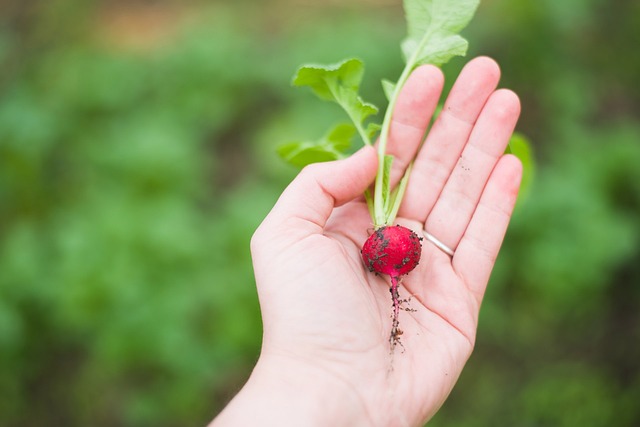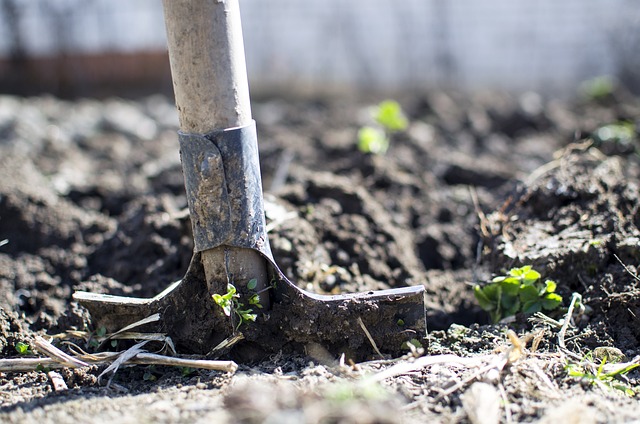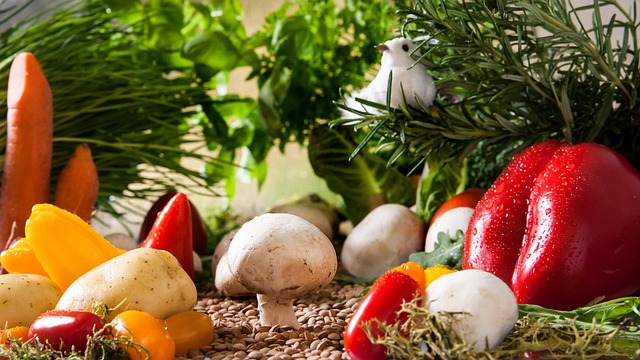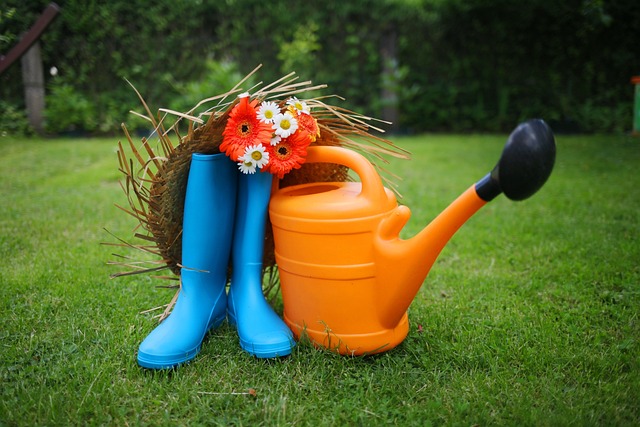Log in or create new account to save this product to your wishlist.

5 Tips for Starting Your Own Vegetable Garden
Start your very own vegetable garden with these 5 expert tips. From A to Z, MOOWY's guide will help you garden successfully!
🌱 All important maintenance moments for your lawn during the year. Leave your email and we will send you the lawn calendar for free.
Enter your email
Receive the lawn calendar in the mail
Enjoy a green lawn all year round!

- Order by 2PM = shipped today
- 250.000+ satisfied customers!
- 60 day satisfaction guarantee
If you want to enjoy healthy, fresh, and organic vegetables, starting your own vegetable garden is a great idea. However, it can be quite a challenge, especially if you have no experience growing vegetables. In this blog, I’ll give you five tips for starting your own vegetable garden so that you can enjoy a fruitful and lush garden!
Introduction to vegetable gardening
Before we dive into the tips, let’s first talk about what a vegetable garden actually is and why it can be a good idea. A vegetable garden is a small garden designed for growing vegetables. You can create one in your backyard, but also in your front yard or in pots on a balcony or windowsill. If you have very little space, you can even set up a vertical garden.
No matter what type of vegetable garden you choose, it’s a great way to become self-sufficient and grow healthy food for yourself and your family.
Benefits of growing your own vegetables

There are many benefits to growing your own vegetables. First of all, they are fresher and healthier than the vegetables you buy in the supermarket. Moreover, you can choose organic seeds and avoid using pesticides, making your vegetables even healthier. Additionally, you save money because you don’t need to buy vegetables at the supermarket. Finally, it’s also a simple way to relax and enjoy the healthy outdoors.
Think before you start
Before you start planting your vegetable garden, there are a few factors you need to consider. First, determine how much space you have available. If you don’t have a large garden, you might opt for a vertical garden or a vegetable garden in pots. Next, analyse where the sun and shade spots are in your garden. This will help you decide where to plant. Finally, you should know which vegetables grow in which season to determine when to plant them.
Tip 1: Choose the right location for your garden
One of the most important factors for a successful vegetable garden is location. Choose a spot in your garden that gets at least six hours of sunlight a day. This is important because most vegetables need sunlight to grow and ripen. The location should also be close to a water source so that you can easily water the plants. Make sure the soil is well-drained; otherwise, your vegetables may suffer from root rot.
Tip 2: Prepare the soil for planting

Before you start planting your vegetables, you need to prepare the soil. This involves removing all weeds and stones from the soil. Then, you need to till the soil and add compost and fertiliser. Compost is a great way to provide nutrients to the soil and stimulate the growth of microorganisms. Fertiliser is also a good way to add nutrients to the soil, but use it sparingly to avoid over-enriching the soil.
Tip 3: Make a good choice of the right vegetables

Choosing the right vegetables is also important for a successful vegetable garden. Therefore, choose vegetables that are suitable for the climate where you live and the season. Some vegetables are better suited to cold weather, while others grow better in warm weather. Also, choose vegetables that you enjoy eating and that fit well with the rest of your diet.
Tip 4: Use the right watering and fertilising techniques
Watering and fertilising are essential for healthy vegetable growth. So, water your vegetables regularly, but not too much. Too much water, as mentioned, can lead to root rot and other problems. Also, use the right fertiliser for your vegetables. Some vegetables need more nitrogen than others, so make sure you use the right fertiliser for each vegetable.
Tip 5: Avoid pests and diseases
Pests and diseases can pose a significant threat to your vegetable garden. So, regularly check for signs of pests and diseases, and take immediate action if you see any. Fortunately, there are plenty of natural remedies you can use to combat pests and diseases, such as neem oil and garlic extract.
Recommended tools and supplies for your vegetable garden

To maintain your vegetable garden, you will need some tools and supplies. Think of essential tools like a shovel, rake, watering can, and pruning shears. Boots will also undoubtedly come in handy. You’ll also need seeds, potting soil, compost, fertiliser, and mulch.
Final thoughts
With these five expert tips, you are well on your way to a successful vegetable garden. So, what are you waiting for? Start planting your own vegetables today and enjoy the benefits of a healthy and fresh harvest!
Happy gardening!
-
Zero-Waste Gardening – This is How You Do It!Did you know that the average person wastes between 100 and 150 kilos of food every year? That's why the concept of zero-waste gardening is becoming increasingly important for environmentally conscious gardeners that like to do their gardening greener.Read more
-
How to Master Tree Pollarding: A Practical GuidePretty dense! What might be an insult to some, is certainly a compliment to trees. Through pollarding, you can make sure, your trees have a dense crown of beautiful leaves.Read more
-
Get Ready: Here are 5 Garden Trends for 2025Curious about the latest garden trends for 2025? From smart solutions to sustainable choices, discover all the outdoor trends that are transforming British gardens!Read more
-
How to Care for Plants in Winter: A Simple GuideWhen winter comes around, the care requirements of your plants change. Find out, how to adjust the care routine for your plants.Read more
-
Companion Planting Made Easy: A Step-by-Step TutorialStrategic plant partnerships can solve common gardening problems like pest invasion and disappointing yields. Find out which plants are great together in our companion planting guide.Read more
-
How to Grow Sweet Potatoes in Your GardenWant to know something splendid? A single sweet potato plant can produce 5 to 10 pounds (4.54 kg) of nutritious tubers—plenty to keep your family’s pantry well-stocked for weeks!Read more
-
Revive Your Lawn After Winter With These Easy StepsTired of winter lawn damage? Discover how to repair brown spots, remove weeds, and revitalise your grass for a thriving garden this spring.Read more
-
A Complete Guide On Lighting for Your House PlantsAchieve perfect lighting for houseplants! This guide covers light mapping, plant placement, and grow light tips to help your plants flourish indoors.Read more
Leave a comment
Your answer will be displayed on the site and the interested party will be notified by email.
Leave a comment
Have a question or want to share your experience? Leave us a comment.

- Order by 2PM = shipped today
- 250.000+ satisfied customers!
- 60 day satisfaction guarantee

- Order by 2PM = shipped today
- 250.000+ satisfied customers!
- 60 day satisfaction guarantee

🌱 All important maintenance moments for your lawn during the year. Leave your email and we will send you the lawn calendar for free.
Enter your email
Receive the lawn calendar in the mail
Enjoy a green lawn all year round!






















Comments (0)
There are no comments yet. Well then, what are you waiting for to
Be the first to write your comment!inaugurate this pretty page?
Do you have some comments?